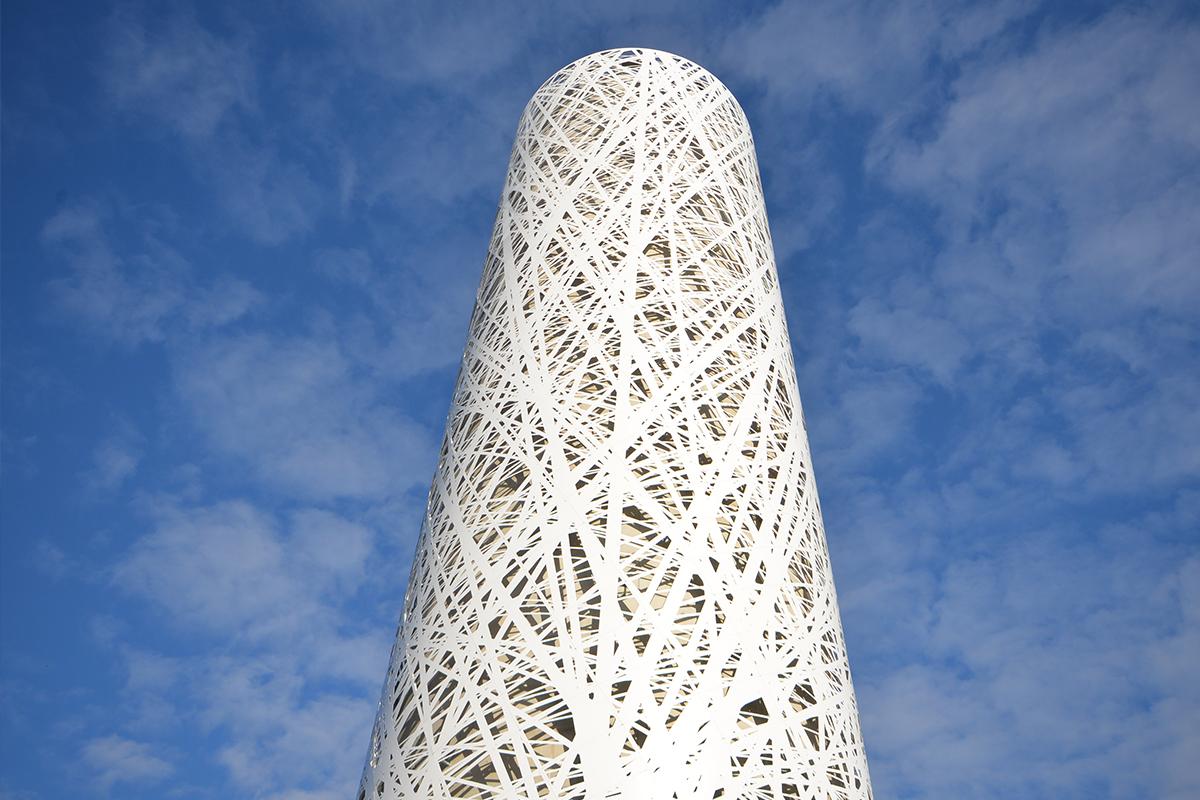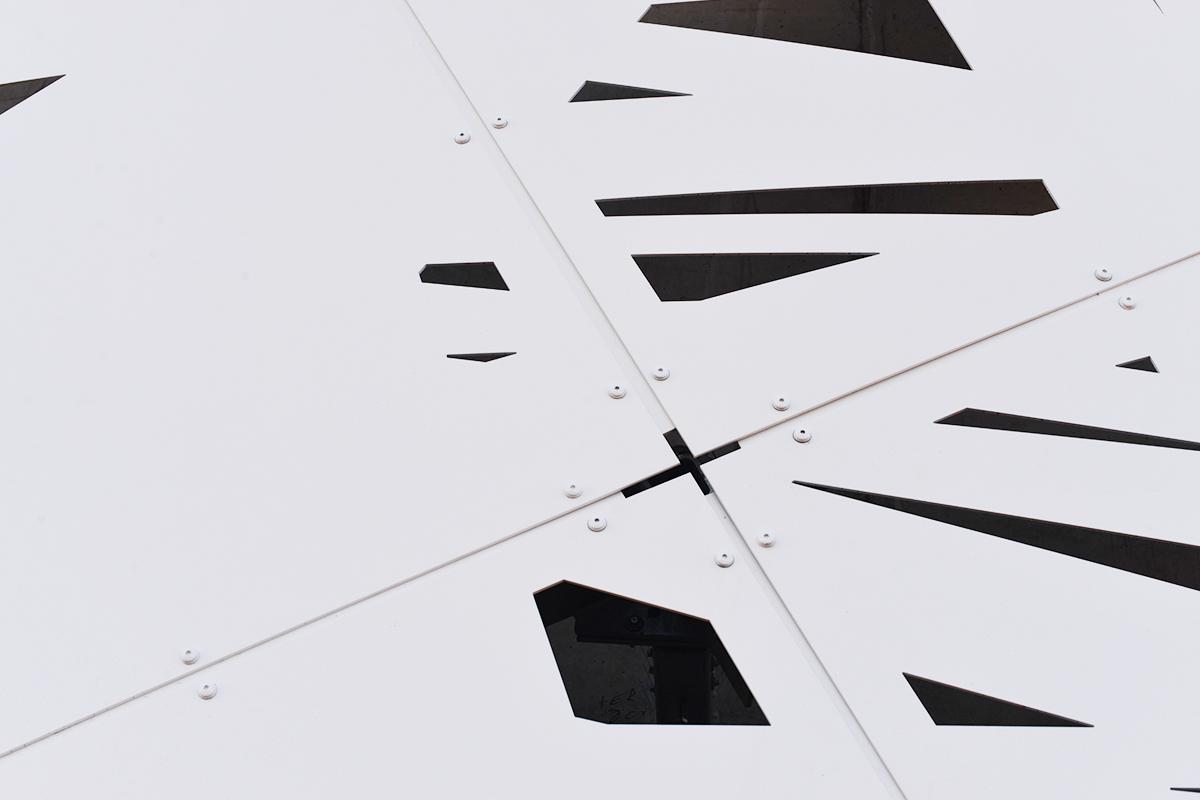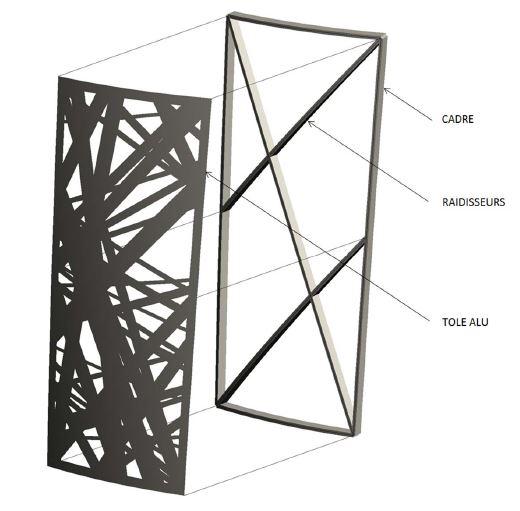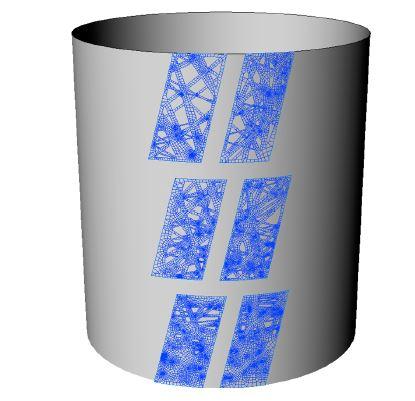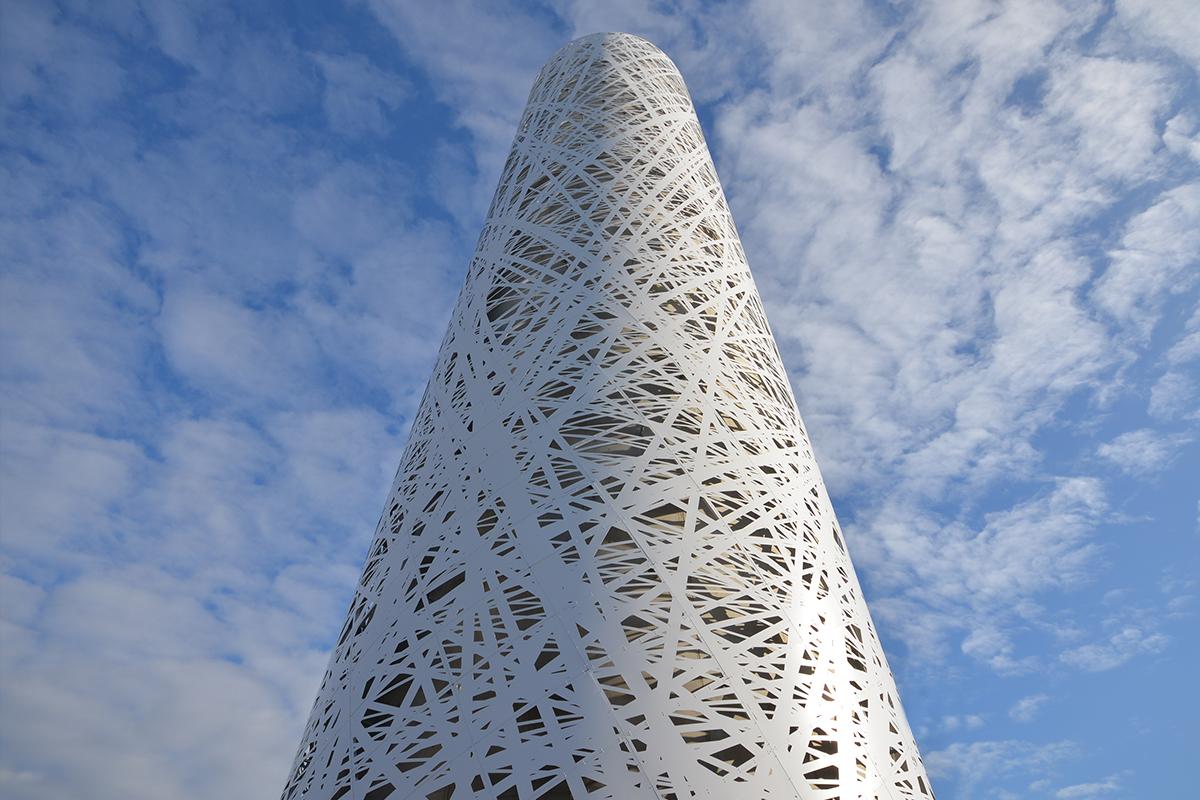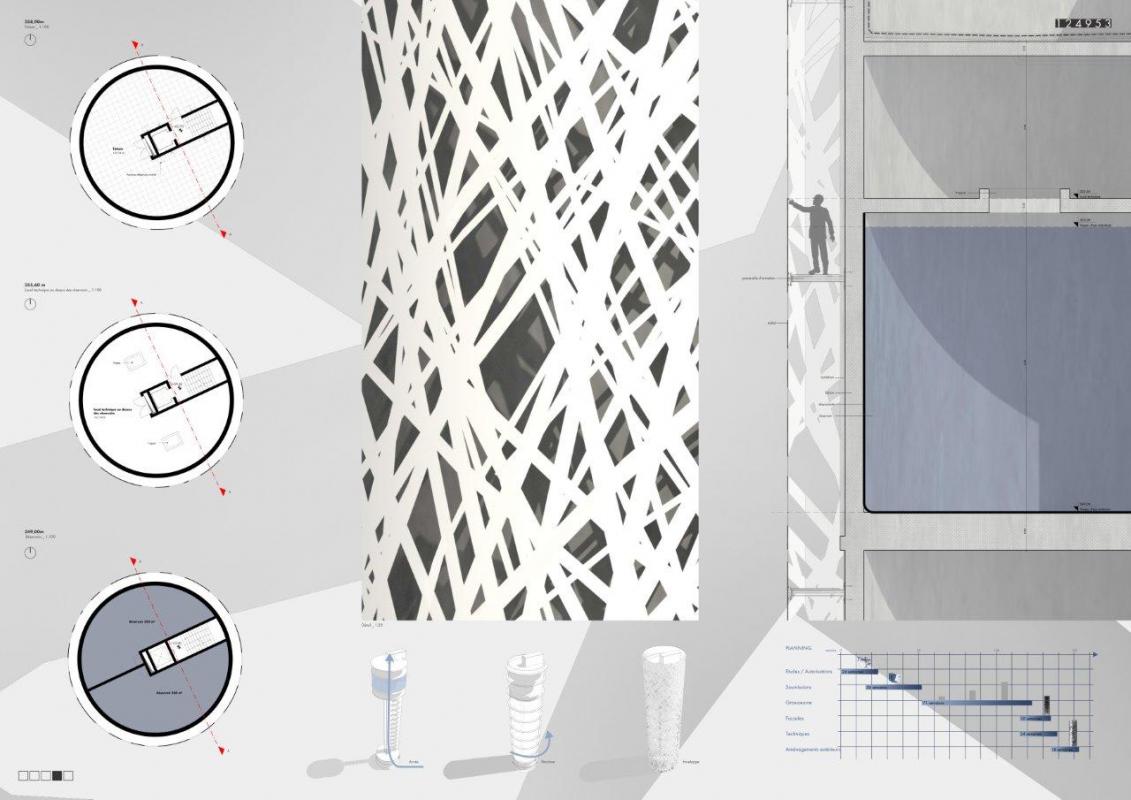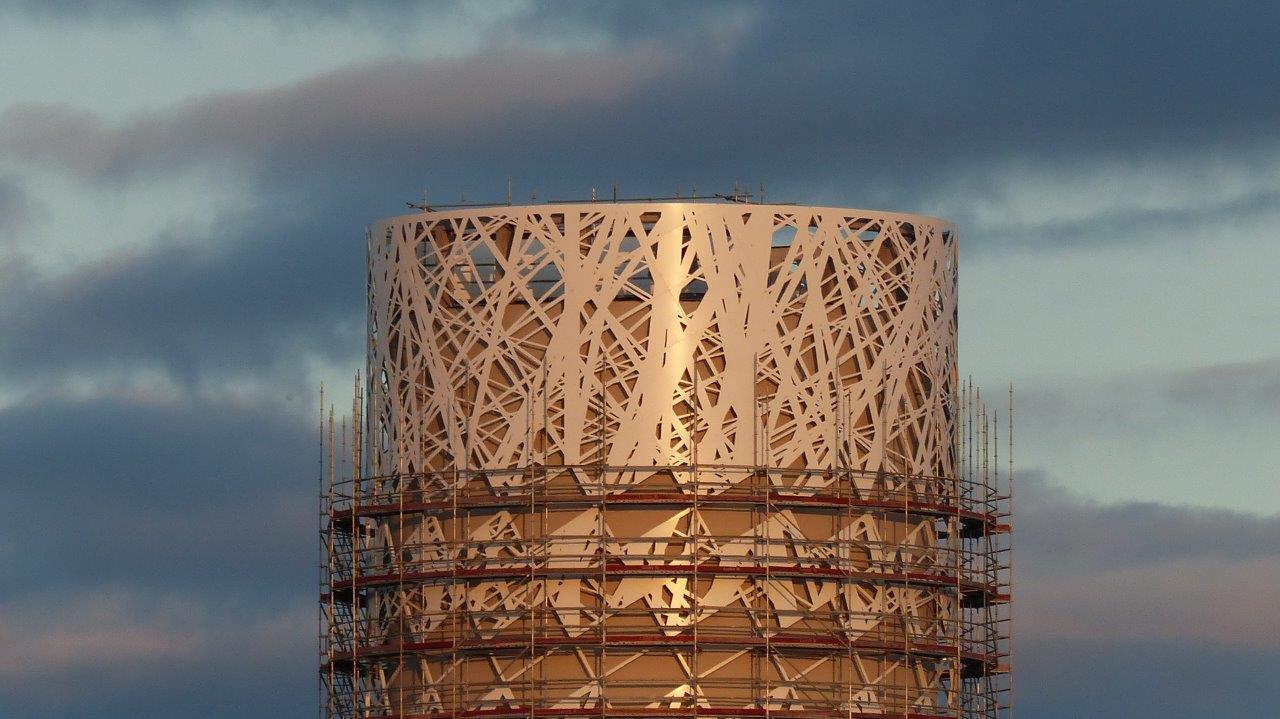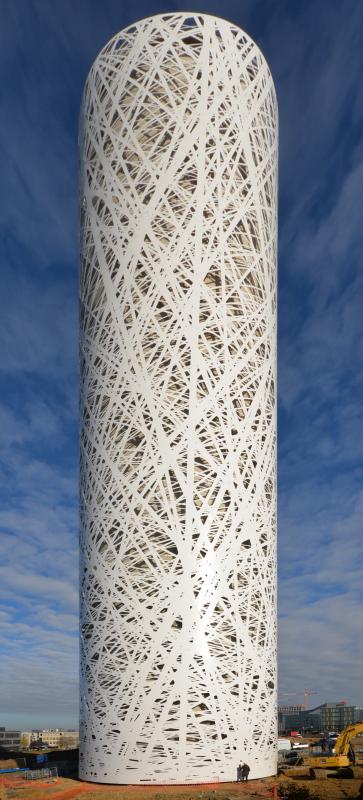Château d'eau de la Cloche d'or
Metal mesh cladding of a water tower in Luxembourg
As part of its effort to modernize its infrastructure, the Water Service of the City of Luxembourg is planning the construction of new water towers. The Ban de Gasperich water tower is located in a cross-border area at the intersection of major highways connecting France and Luxembourg. It plays a key role in supplying the southern part of the city's water distribution network. In this emerging district, this structure is one of the first elements shaping the new identity of Ban de Gasperich; it will be clad in a metal structure, giving it a distinctive character.
The installation of nearly 2,800 m² of cladding, with a geometry that does not follow any repetitive or standardized construction pattern, raises the challenge of systematizing construction processes. A balance must be struck between perceived randomness and the systematic approach required for fabrication—this is the project's primary technical challenge. The water tower's cladding is made of powder-coated aluminum for durability and ease of maintenance. An oblique layout allows the surface to be divided into large prefabricated panels. These elements will be attached to the main structure using punctual brackets. The joint treatment between panels aims to minimize the visibility of the regular grid required for cost-effective fabrication. Lighting between the concrete core and the cladding mesh will showcase the water tower as an urban beacon.
For T/E/S/S, the challenge of this project lies in making the cladding constructible without compromising its intrinsic nature, which is defined by the irregularity of its geometry. The key to success is the implementation of simple construction details and the most discreet possible systematization.

